The Need for an Italian Light Fighter
The Regia Aeronautica became aware of the need for a light fighter because of three distinct situations.
- A lack of high-performance power plants for larger aircraft.
- A limited supply of raw materials such as aluminum.
- A chronic fuel shortage requiring the use of small, efficient engines.
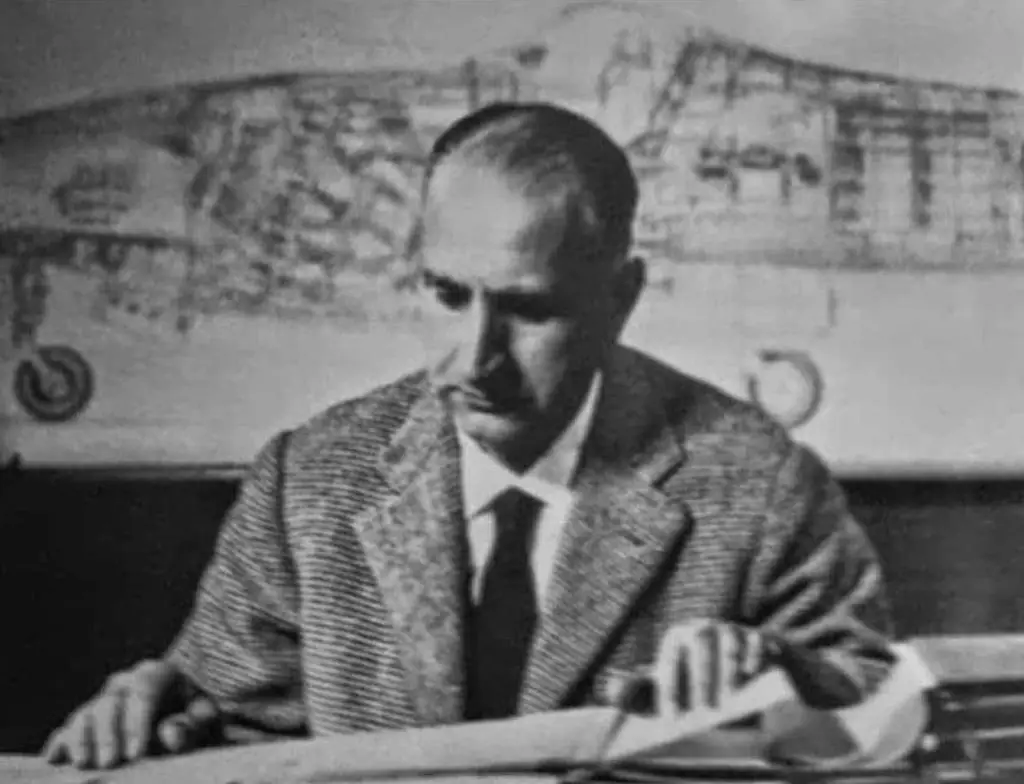
Italian engineer Sergio Stefanutti.
Ambrosini SAI.7
Between October 1938 and April 1939, Sergio Stefanutti designed the SAI.7 as a high-performance touring plane for the civilian market. With a sleek and aerodynamic look, the SAI.7 possessed exceptionally clean lines, made of wooden construction with plywood skin. The SAI.7 became the first Ambrosini aircraft with retractable landing gear. In this instance, a fully-retractable tail wheel type with wide-track main units that swung inward and upward into the roots of the cantilever low-set wing.
Sergio Stefanutti completed the first two aircraft in July 1939 with a windscreen design that extended to the nose creating a very aerodynamic look. Both aircraft entered the Avio Raduno del Littorio competition which commenced a few days after the machines conducted their maiden flights.
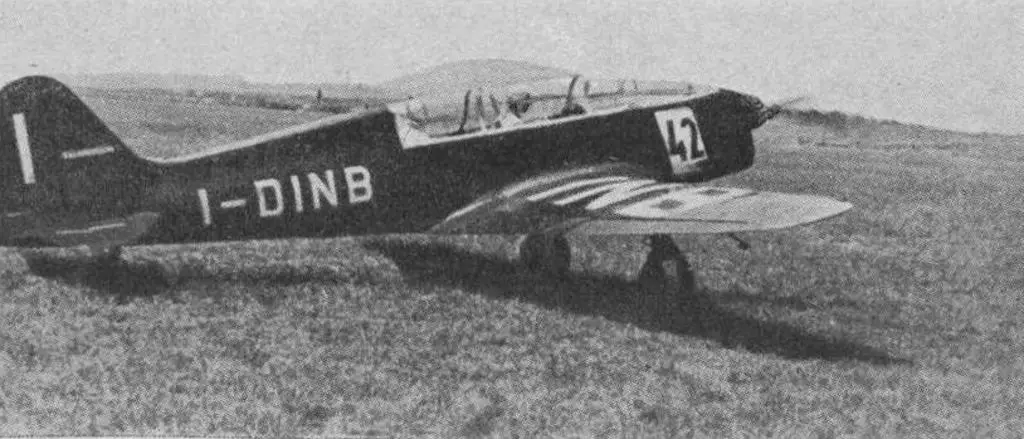
Ambrosini SAI.7 at the L’Aerophile in October 1939.
Being underdeveloped, the aircraft did not win the competition but nonetheless put in a very respectable performance. The aircraft achieved a maximum speed of 251 mph with its 280 hp air-cooled Hirth HM 508D inverted-Vee engine. One aircraft took a class closed-circuit speed record over 61.2 miles with a speed of 244 mph.
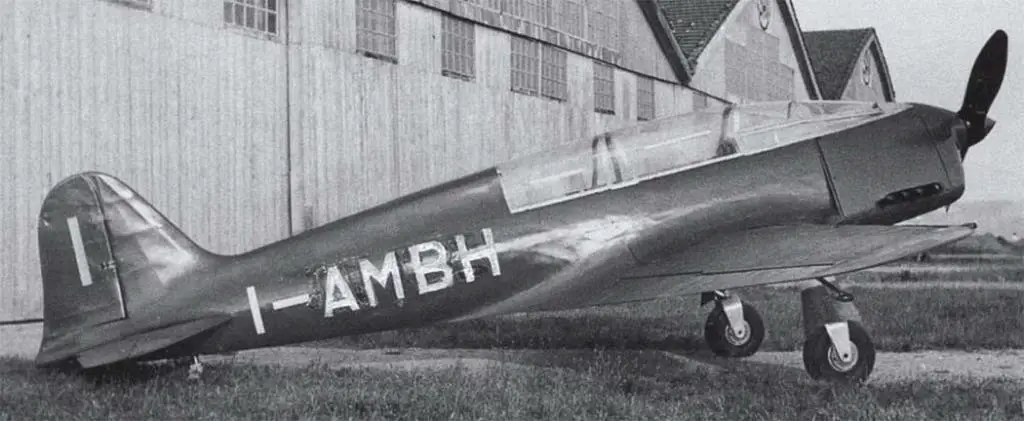
Ambrosini SAI.7. This image clearly shows the aerodynamic canopy.
The high speed/power ratio of the SAI.7 caught the imagination of the Regia Aeronautica. It understood the possibilities of a light fighter which could be built in large numbers without drawing on the country’s strategic stockpile of aluminum alloys. However, little was done about the military potential of the SAI.7 in the short- term.
A Fighter Trainer
In 1941 Stefanutti began work on a fighter trainer derived from the SAI.7. A 280 hp Isotta-Fraschini Beta RC.10 inverted-Vee engine replaced the Hirth engine. Stefanutti also increased the length of the fuselage and wingspan. Stefanutti dropped the racing windscreen for a conventional framed cockpit enclosure with two rearward sliding sections for access. The landing gear became modified with a fixed tailwheel. These changes increased the maximum take-off weight, but the maximum speed only reduced slightly to 248.5 mph.
By the time the first SAI.7 fighter trainers appeared, Italy found itself in need for more combat aircraft rather than trainers. So further work on the fighter trainer variant lay abandoned until after the war when it was revived and led to the S.7 and Supersette (Super 7) trainers.
Ambrosini SAI.207
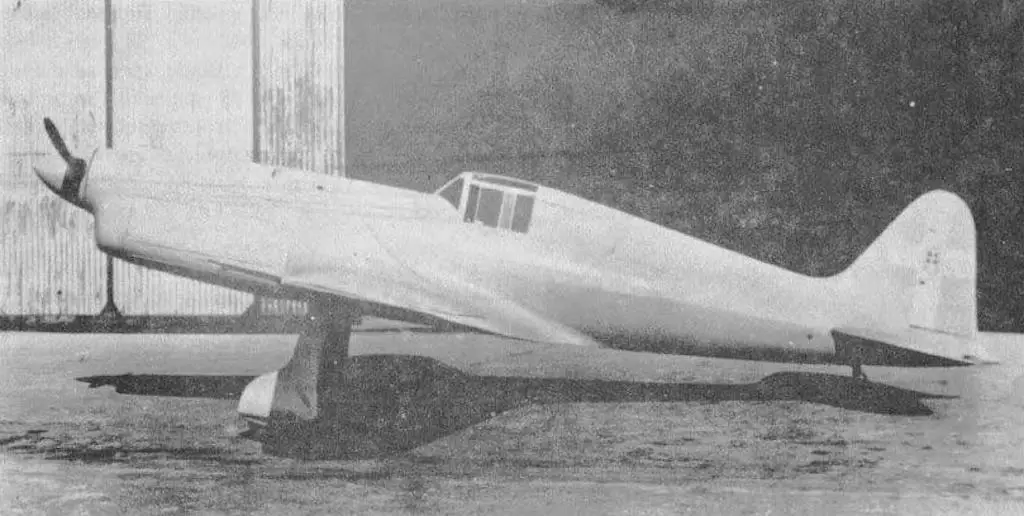
The SAI.107.
Stefanutti and the Italian Air Ministry did not lose sight of the SAI.7’s potential for development into a light fighter. In 1942 Ambrosini developed the SAI.107 into an experimental fighter to evaluate its potential. This new version essentially became a single-seat derivative of the fighter trainer. The aircraft housed a considerably more powerful engine in the form of a 540 hp Isotta-Frashini Gamma RC.35 IS inverted-Vee engine driving a two-bladed propeller. This prototype recorded a maximum speed of 348 mph and confirmed its potential as a viable interceptor. Stefanutti proceeded to design the fighter with fully operational equipment including armament. This became the Ambrosini SAI.207, or alternatively known as the SAI Ambrosini 207. However, it differed from the SAI.107 only in its more powerful engine. The SAI.207 utilized an Isotta Fraschini Delta III R.C.40 inverted V-12 engine rated at 750 hp driving a three-bladed propeller.
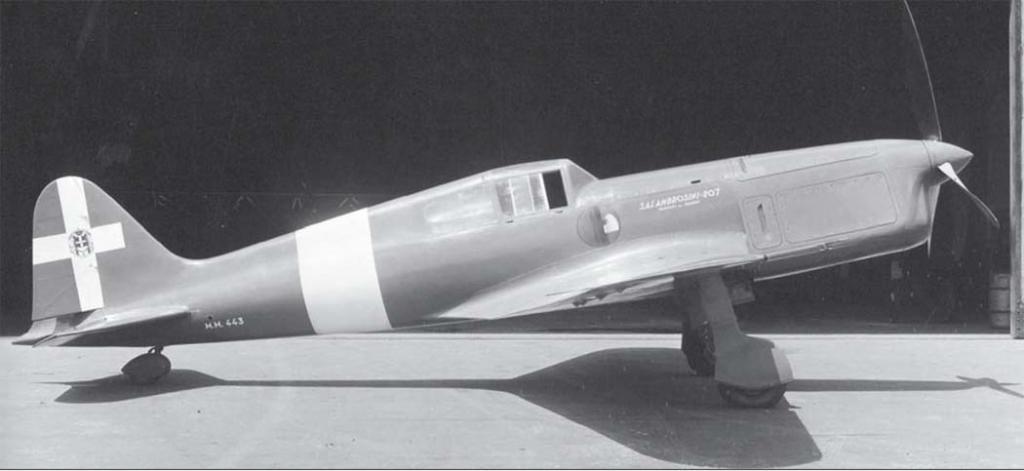
Ambrosini SAI.207.
Flight trials began in 1942, and the first SAI.207 recorded a dive speed of 800 km/h (497 mph) at 9,845 ft. This incredible speed corresponded to Mach .86. While level, the aircraft reached 580 km/h (360 mph).
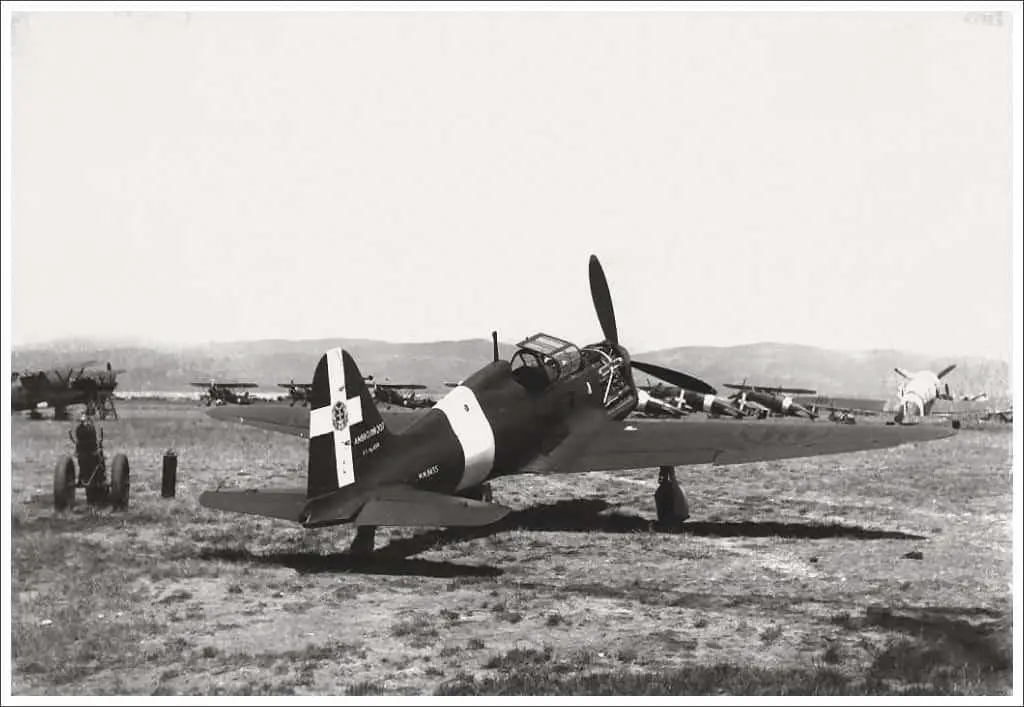
The Ambrosini SAI.207 light fighter.
The Italian air ministry ordered Ambrosini to begin work on a pre-production batch and placed an order for 2,000 production aircraft. Only 12 pre-production aircraft were completed, three of them being allocated to the 3rd Stormo Caccia Terrestre during July 1943 for operational trials. During these trials, Italian pilots showed little interest or appreciation for the aircraft. Italy secured an armistice with the Allies just two months later.
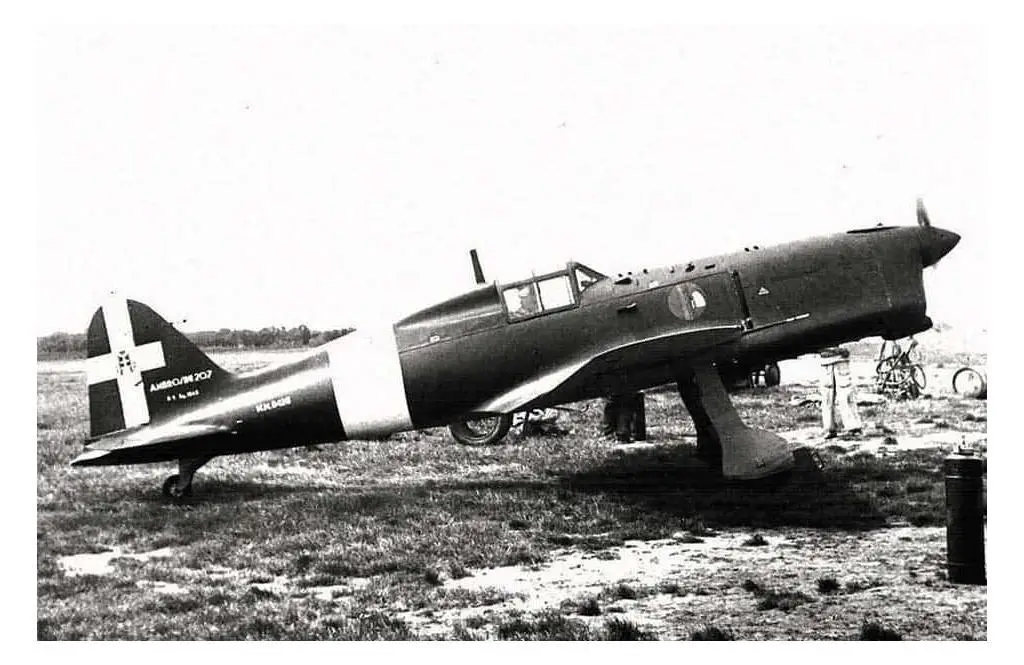
Another view of the SAI.207.
Ambrosini SAI.403
Regia Aeronautica canceled the production of the SAI.207 in favor of its SAI.403 Dardo (dart) derivative. This essentially was a more sophisticated version of the SAI.207 with the same type of stressed-skin wooden construction. However, it had fully retractable landing gear rather than the 207’s combination of a retractable main gear and fixed tailwheel. Moreover, changes included a revised tail unit with a variable-incidence tailplane, greater ammunition capacities, and an upgraded power plant in the form of the 750 hp Isotta-Fraschini Delta RC.21/60 Serie I-IV driving a three-bladed Piaggio constant-speed propeller.
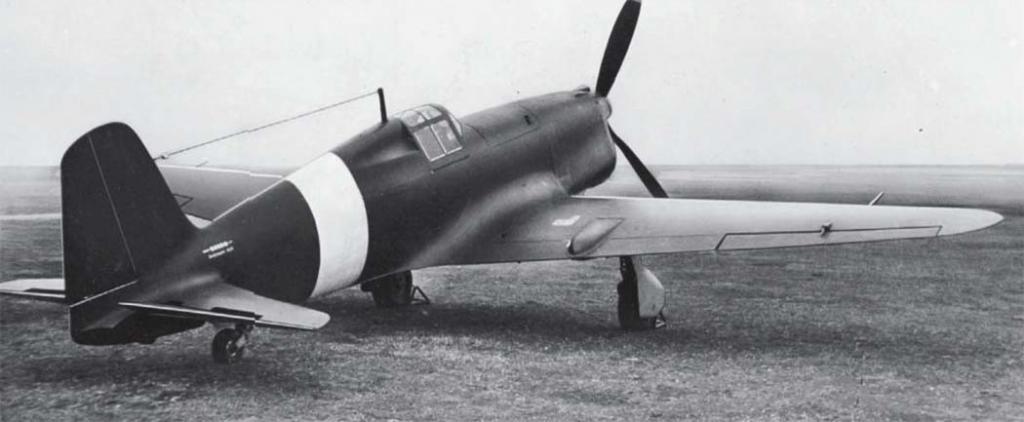
Ambrosini SAI.403 Dardo circa 1943.
The first SAI.403 flew late in 1942 and produced exceptional performance. It reached a maximum speed of 404 mph at 23,620 ft. As a result, the Regia Aeronautica terminated the production of the SAI.207 in favor of 3,000 Ambrosini SAI.403. Following the armistice, the program closed down without the delivery of a single SAI.403 light fighter.
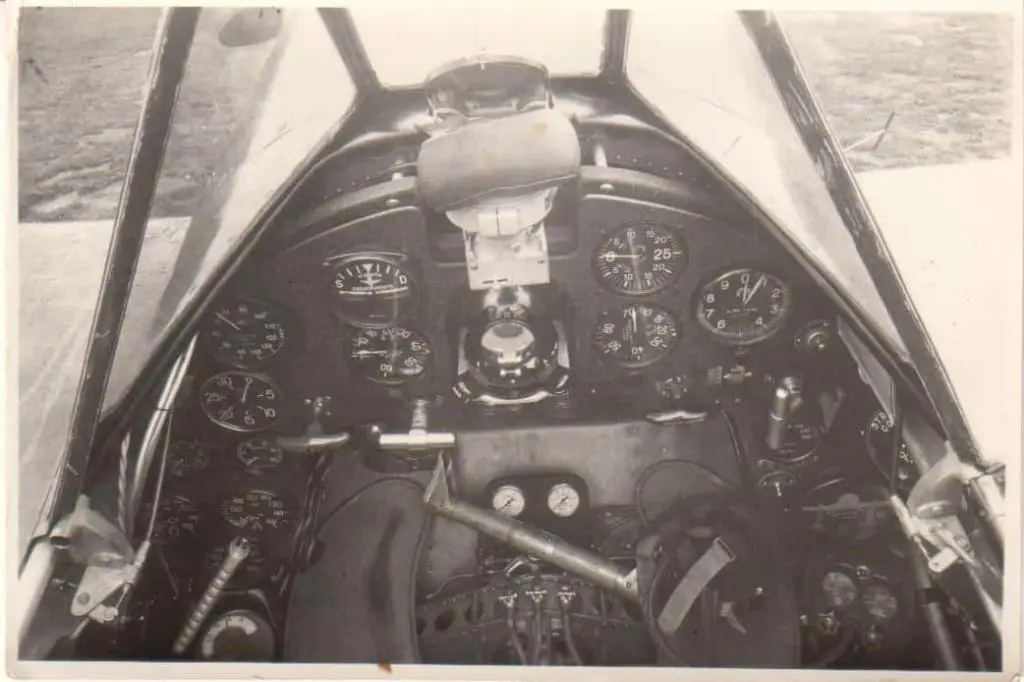
Ambrosini SAI.403 instrument panel.
SAI.403 Dardo Variants
The three variants of the SAI.403 planned included the following:
Dardo-A: Lightweight interceptor with armament restricted to two 12.7 mm machine guns.
Dardo-B: General-purpose fighter with two 20 mm cannon and two 12.7 mm machine guns.
Dardo-C: Long-range fighter with two 20 mm cannon and provision for two 39.6 U.S. gallon drop tanks supplementing the internal fuel capacity from the 79.25 U.S. gallon of the Dardo A/B. This increased the total fuel capacity to 108.3 US gallon.
Specifications of the SAI. 207
| Model | Ambrosini SAI.207 |
|---|---|
| Crew | 1 |
| Length | 26 ft 4 in in (8.02 m) |
| Wingspan | 29 ft 6.5 in (9.00 m) |
| Height | 9 ft 5 in (2.87 m) |
| Powerplant | (1) Isotta Fraschini Delta III R.C.40 inverted V-12 engine (750 hp) |
| Speed | 398 mph (641 km/h) |
| Weight | Empty: 3,858 lb (1,750 kg) Max: 5,324 lb (2,415 kg) |
| Range | 528 miles (850 km) |
| Service Ceiling | 39,370 ft (12,000 m) |
| Armament | (2) 12.7 mm Breda SAFAT machine guns |